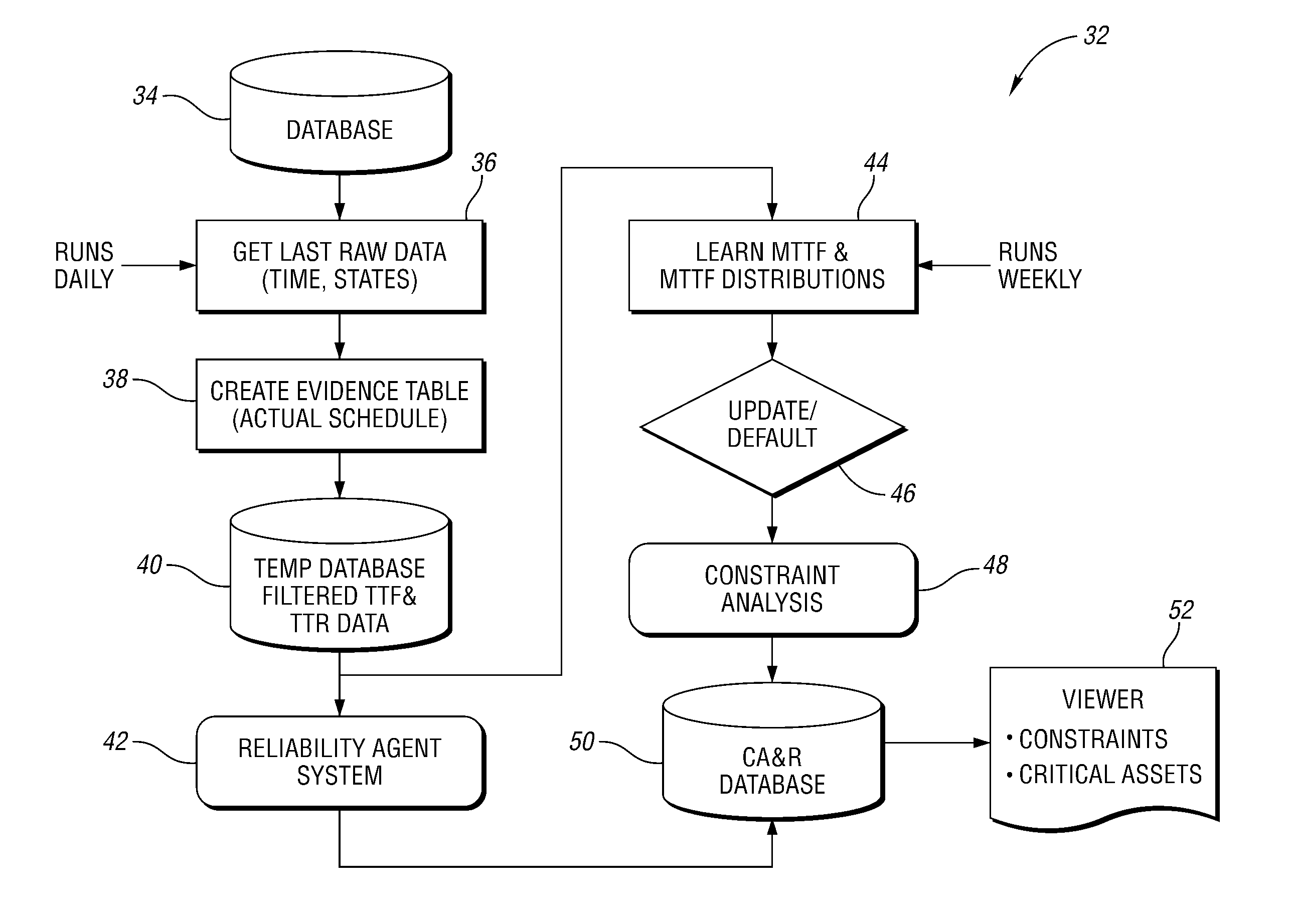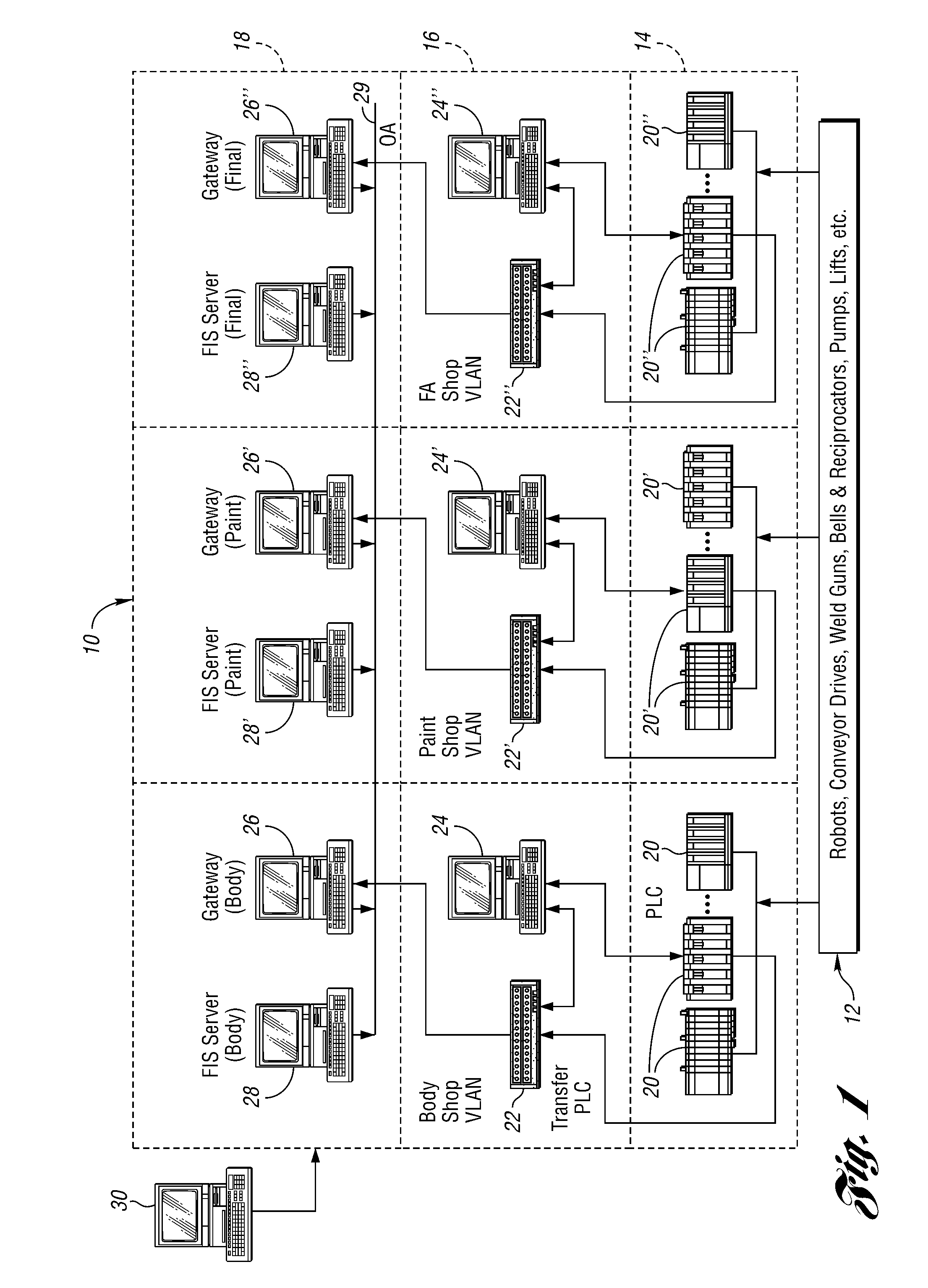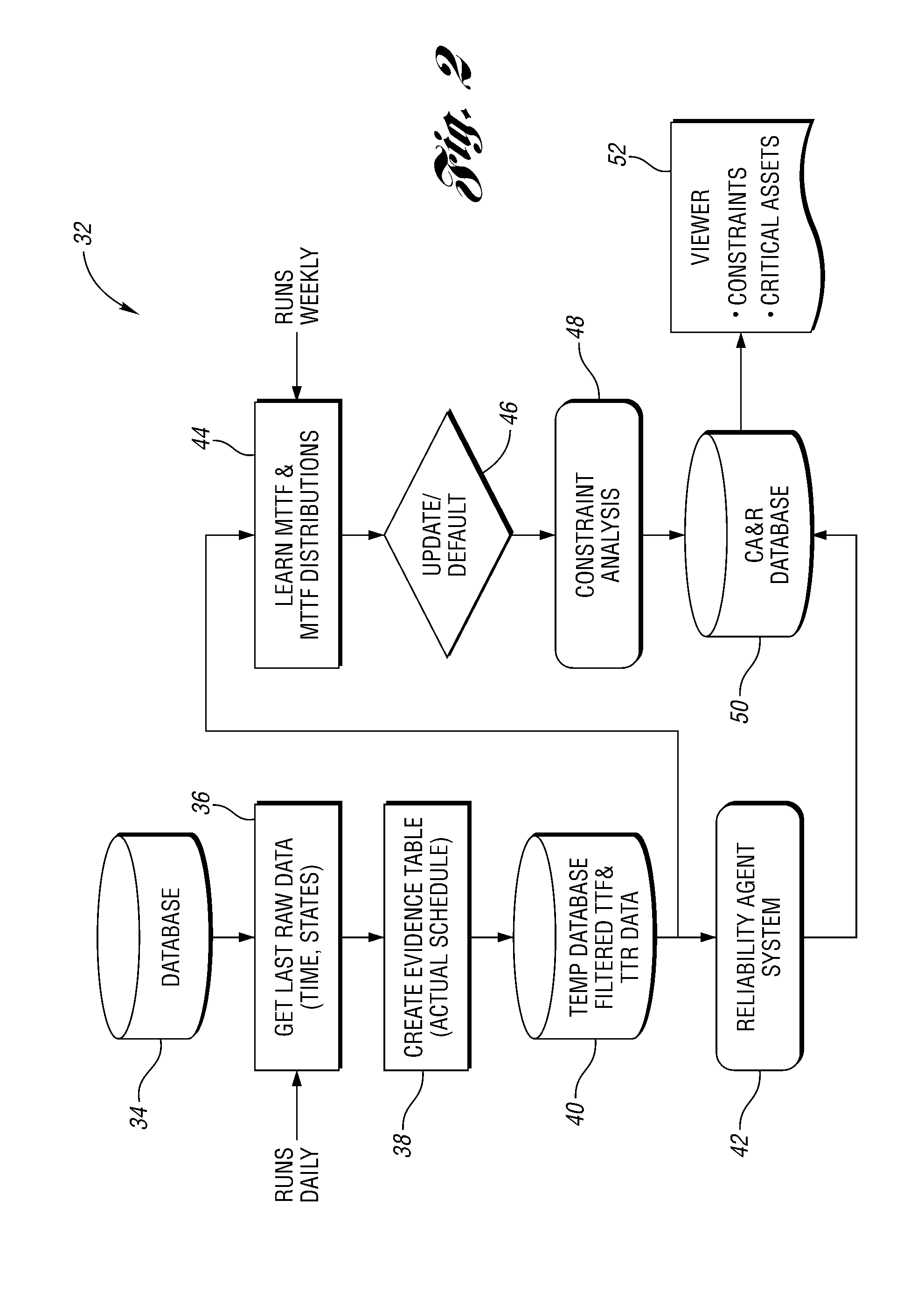Method for analyzing operation of a machine
a technology of operation and machine, applied in the direction of instruments, testing/monitoring control systems, nuclear elements, etc., can solve the problems of machine idleness, machine “starvation”, and downtime, and achieve the effect of facilitating the prediction of the future operation of each machin
- Summary
- Abstract
- Description
- Claims
- Application Information
AI Technical Summary
Benefits of technology
Problems solved by technology
Method used
Image
Examples
Embodiment Construction
)
[0059]FIG. 1 shows a schematic representation of a factory information system (FIS) 10 in communication with a number of manufacturing assets 12, such as robots, conveyor drives, weld guns, etc. The FIS 10 is a three-layer system with the first layer 14 including a number of PLC's 20, 20′, 20″. As shown in FIG. 1, the PLC's 20 are used to control manufacturing assets in a body shop. Similarly, the PLC's 20′ are used to control assets used in a paint shop, and the PLC's 20″ are used to control assets used in a final assembly (FA) shop. The same nomenclature using the prime and double prime symbols is used throughout the description of the FIS 10 to indicate similar components used in the different manufacturing areas.
[0060]The FIS 10 also includes an intermediate layer 16 of transfer PLC's 22, 22′, 22″, each of which is connected to a respective personal computer 24, 24′, 24″. Each of the computers 24, 24′, 24″ is in communication with a respective one of the asset controlling PLC's...
PUM
 Login to View More
Login to View More Abstract
Description
Claims
Application Information
 Login to View More
Login to View More - R&D
- Intellectual Property
- Life Sciences
- Materials
- Tech Scout
- Unparalleled Data Quality
- Higher Quality Content
- 60% Fewer Hallucinations
Browse by: Latest US Patents, China's latest patents, Technical Efficacy Thesaurus, Application Domain, Technology Topic, Popular Technical Reports.
© 2025 PatSnap. All rights reserved.Legal|Privacy policy|Modern Slavery Act Transparency Statement|Sitemap|About US| Contact US: help@patsnap.com



